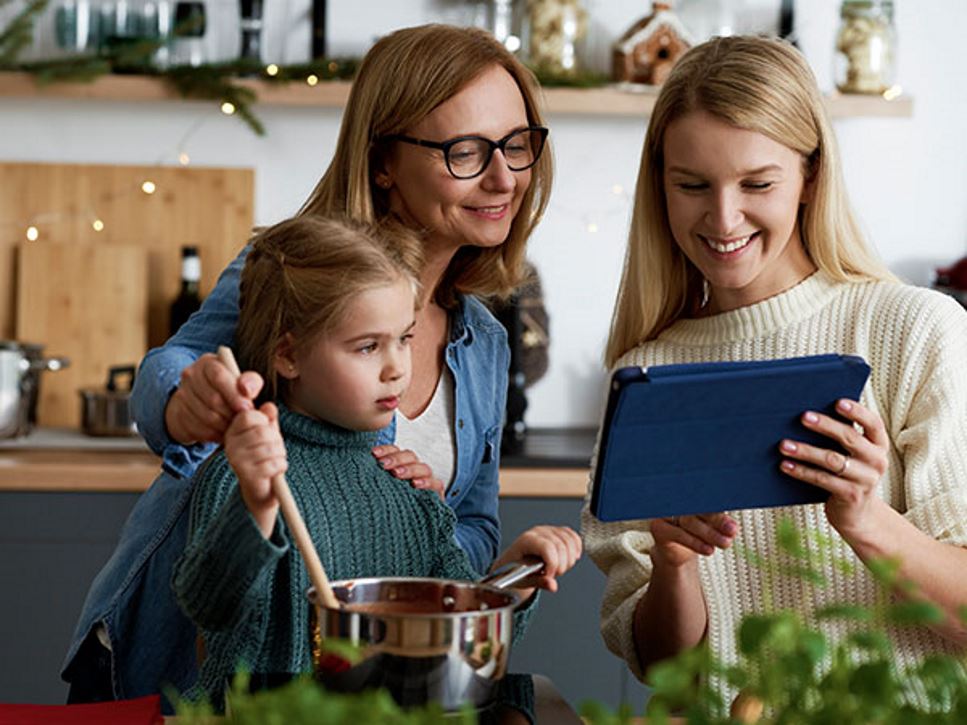Food is as much a part of holiday gatherings as football, decorations and carols. This holiday season, keep food safety in mind every step of the way, including proper planning, safe shopping, mindful cooking and wrapping up leftovers on schedule.
Proper Planning
Make sure your kitchen is equipped with what you need for safe food handling, including two cutting boards (one for raw meats and seafood and the other for produce and ready-to-eat foods), a food thermometer, shallow containers for storage, paper towels and soap. Store perishable foods in the refrigerator at 40°F or below, or in the freezer at 0°F or below. Check the temperature of both the refrigerator and freezer with an appliance thermometer.
Safe Shopping
It's important to keep food safety in mind as you shop. Keep raw meat, poultry and seafood separate from ready-to-eat foods like fruit, vegetables and bread. Embrace fruits and vegetables that are oddly shaped but don't purchase bruised or damaged produce, or canned goods that are dented, leaking, bulging or rusted, as these may become a breeding ground for harmful bacteria.
When shopping, choose refrigerated and frozen foods last to help prevent them from entering the temperature danger zone where bacteria multiply the fastest, between 40°F to 140°F. Bring foods directly home from the grocery store and always refrigerate perishable foods, such as raw meat or poultry, right away.
Working in the Kitchen
In a holiday kitchen filled with family and friends, all hands may be on deck, but are those hands clean? Make sure everyone washes their hands thoroughly with clean, running water and soap for 20 seconds before and after handling food.
And, when baking delicious holiday treats, remember that no one should eat raw cookie dough or brownie batter. Have children take the Cookie Rookie Pledge before they assist in the kitchen.
Wrapping Up Leftovers
As you eat and visit, keep in mind how long the food on the buffet table has been sitting out. Remember that you can't tell if a food is unsafe by taste, smell or appearance alone. Throw away perishable foods such as meat, poultry, eggs and casseroles that are left at room temperature longer than two hours and within one hour if it's warmer than 90° F.
Refrigerate or freeze other leftovers in shallow, air-tight containers and label with a date. Use refrigerated leftovers within three to four days by reheating to an internal temperature of 165°F.
Find a Nutrition Expert
Looking for credible nutrition information and recommendations? The Academy of Nutrition and Dietetics' network of credentialed food and nutrition practitioners are ready to help!

